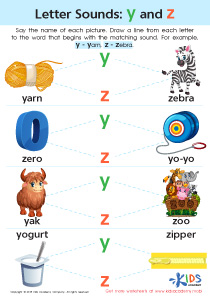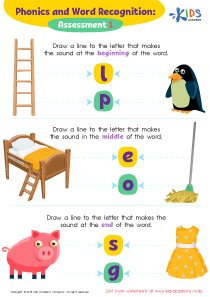Normal Ending Sounds Worksheets for Ages 6-8
4 filtered results
-
From - To
Discover our engaging "Normal Ending Sounds Worksheets for Ages 6-8" designed to enhance phonetic skills and boost reading confidence. Perfect for young learners, these worksheets focus on recognizing and practicing common ending sounds in words. Students will enjoy a variety of fun activities, from matching exercises to fill-in-the-blanks, that reinforce their understanding of phonics. Each worksheet is crafted to support early reading development, making learning both effective and enjoyable. Ideal for classroom or home use, these resources help children build a strong foundation in literacy. Explore our collection and help your learners excel today!
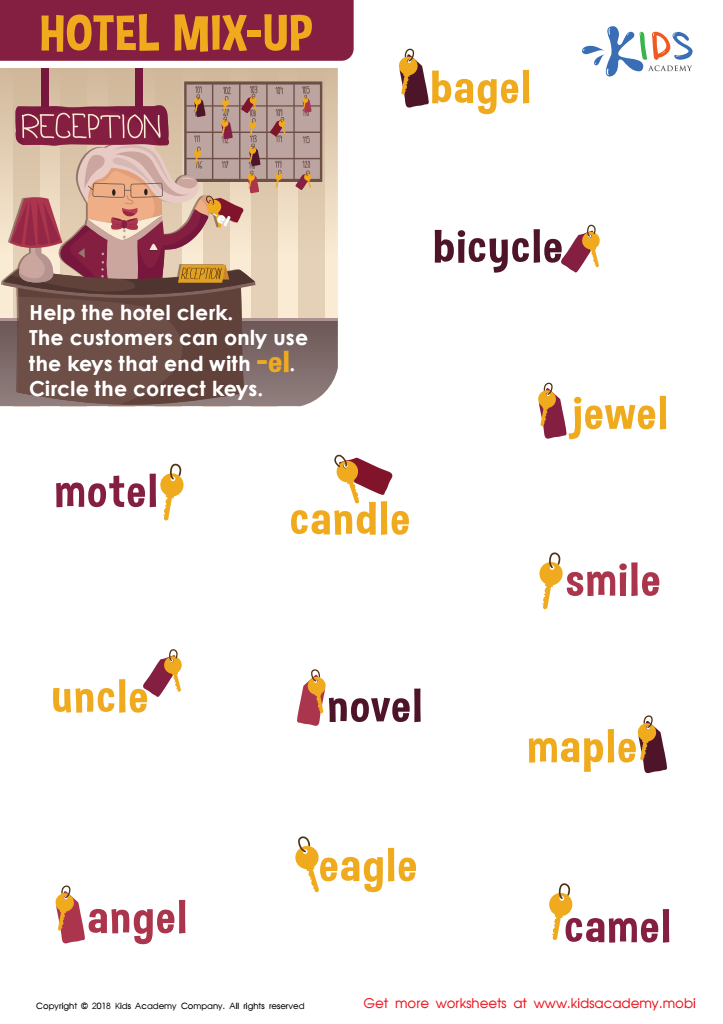

Hotel Mix-up Worksheet
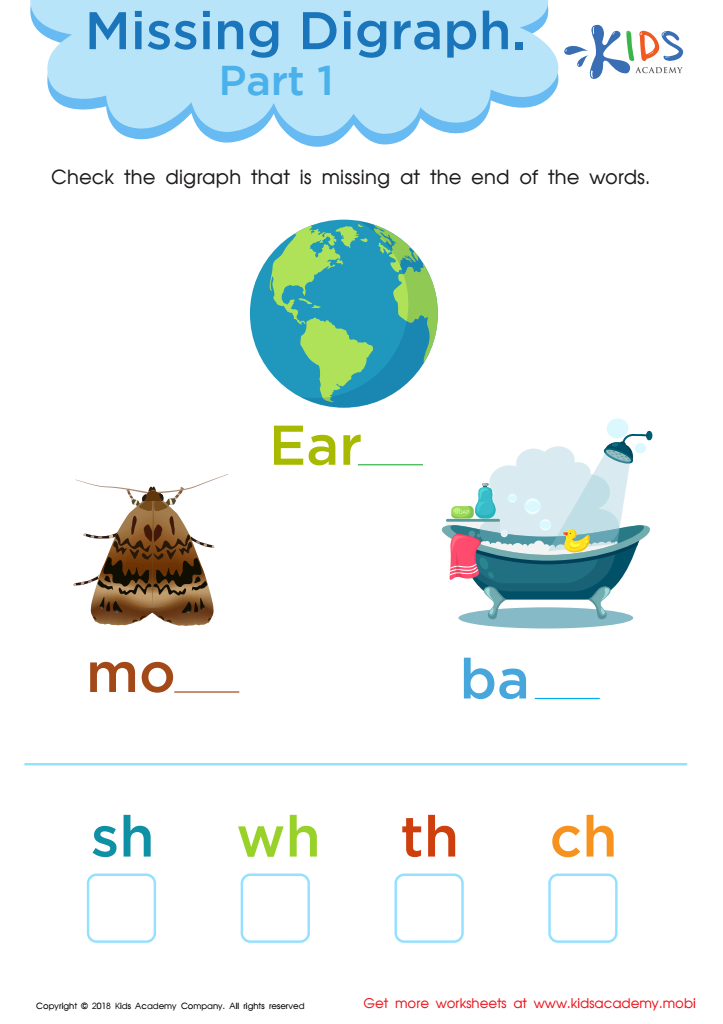

Missing Digraph: Part 1 Worksheet
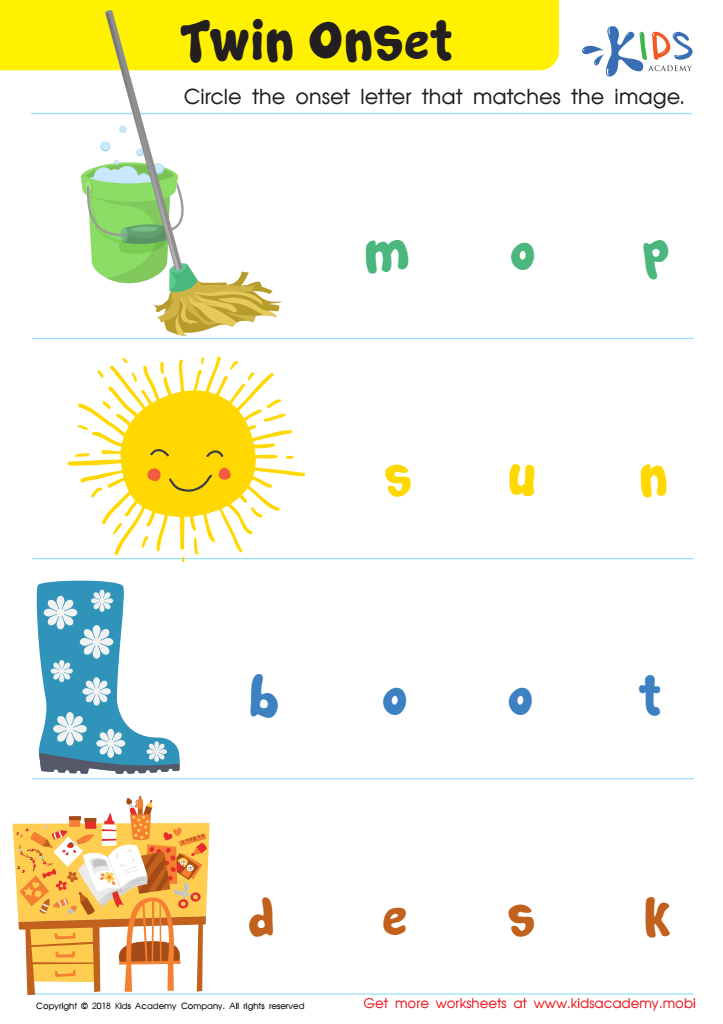

Twin Onset Worksheet
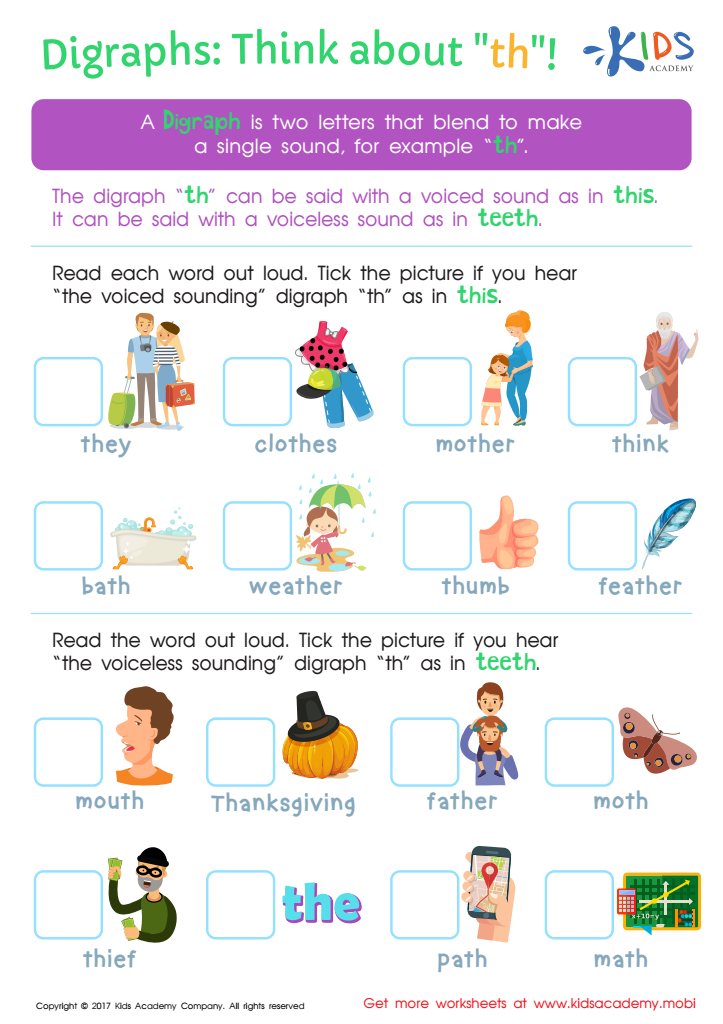

Digraphs: Think About "th" Worksheet
Parents and teachers should care about normal ending sounds for children ages 6-8 because this period is crucial for the development of foundational literacy skills. Phonemic awareness, which includes the ability to recognize and manipulate sounds in words, is a core skill for reading and writing. Mastering ending sounds like "-s," "-ing," "-ed," and common suffixes helps children break words into understandable parts and enhances their decoding abilities.
When children become adept at identifying these sounds, their reading fluency improves. Recognizing how words end also aids in spelling, enabling children to predict spelling patterns more accurately. Moreover, understanding ending sounds facilitates vocabulary expansion as kids learn about grammatical nuances such as plurals and different verb tenses.
Awareness of these ending sounds has significant implications for comprehension, too. When children can effortlessly read words and grasp their meanings, they can more readily understand sentences and entire texts. This boosts their confidence and enthusiasm for reading and learning.
Ultimately, focusing on normal ending sounds provides essential stepping stones for literacy, fostering better academic performance and more robust communication skills. Through attentive guidance at this stage, parents and teachers lay a strong foundation that supports ongoing education and lifelong learning.

 Assign to the classroom
Assign to the classroom




